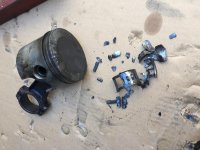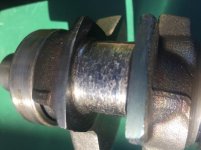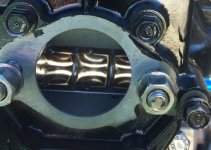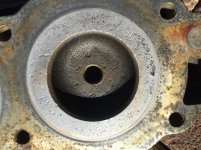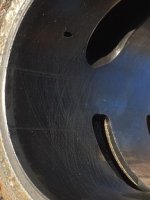The connecting rod bearing on a 1991 Johnson J70PLSIS has melted and I'm attempting to determine why it failed. Seems it could be multitude of possibilities. I'm hoping someone has experience to help me narrow the reason down from my findings.
After dismantling the never taken apart power head here is what I found:
a) Item 3 could be the cause. If the rod bolt somehow loosened, this would immediately cause the entire problem. Is this even possible? Or would the overheating cause the bolt to back out?
b) Since only one cylinder overheated, I am thinking it is unlikely be the VRO fuel pump. Seems all cylinders would have overheated.
c) I'm more inclined to look at the lower carburetor & tubing to see if somehow it failed and no fuel/oil was injected into the lower cylinder causing the overheating/failure.
Any help is much appreciated.
After dismantling the never taken apart power head here is what I found:
- Only the bottom piston overheated.
- The lowest cylinder connecting rod bearing was melted.
- One of the rod bolts holding the melted bearing was loose on inspection.
- The bad cylinder has very little damage - a barely seen small vertical scratch which can probably be honed out.
a) Item 3 could be the cause. If the rod bolt somehow loosened, this would immediately cause the entire problem. Is this even possible? Or would the overheating cause the bolt to back out?
b) Since only one cylinder overheated, I am thinking it is unlikely be the VRO fuel pump. Seems all cylinders would have overheated.
c) I'm more inclined to look at the lower carburetor & tubing to see if somehow it failed and no fuel/oil was injected into the lower cylinder causing the overheating/failure.
Any help is much appreciated.


